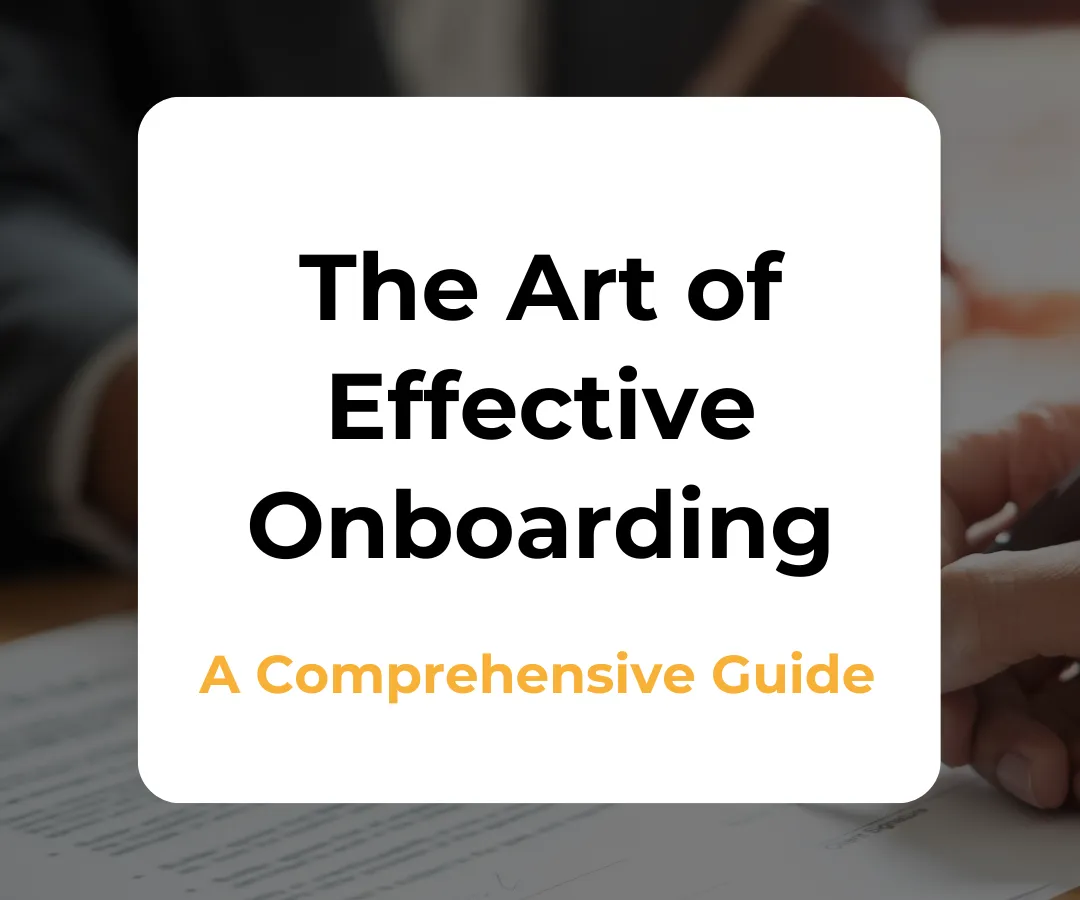Mon - Fri: 9:00 - 17:30
Legacy Strategies
Blogs & Articles
Stay up to date with the latest news
in Recruitment and Human Resources
Legacy Strategies
Blogs & Articles
Stay up to date with the latest news in Recruitment and Human Resources
At Legacy Strategies, we understand that the people behind any organisation are its most valuable asset. That's why we're excited to share our insights, expertise, and industry knowledge with you through our blogs.
In this space, you can find a wealth of information on the latest trends, best practices and innovative strategies that shape the Recruitment and HR landscape. Whether you're a HR professional, a hiring manager, a job seeker, or just someone interested in the ever-evolving world of talent acquisition and management, our blog is your go-to resource.
Stay tuned for regular updates as we explore the cutting-edge developments in HR technology, diversity and inclusion, talent acquisition strategies, and much more. We're here to empower you with knowledge that can drive your organisation's success!
At Legacy Strategies, we understand that the people behind any organisation are its most valuable asset. That's why we're excited to share our insights, expertise, and industry knowledge with you through our blogs.
In this space, you can find a wealth of information on the latest trends, best practices and innovative strategies that shape the Recruitment and HR landscape. Whether you're a HR professional, a hiring manager, a job seeker, or just someone interested in the ever-evolving world of talent acquisition and management, our blog is your go-to resource.
Stay tuned for regular updates as we explore the cutting-edge developments in HR technology, diversity and inclusion, talent acquisition strategies, and much more. We're here to empower you with knowledge that can drive your organisation's success!

The Art of Effective Onboarding: A Comprehensive Guide
"The beginning is the most important part of the work." — Plato

Onboarding is a critical process in any organisation, shaping the early experiences of new hires and setting the tone for their future engagement and productivity. Effective onboarding can transform a newcomer into a fully integrated, engaged, and productive member of the team. This blog post delves into the various facets of effective onboarding, offering insights and strategies to ensure a smooth and successful integration of new employees.
Understanding Onboarding

Onboarding is more than just a one-day orientation or a week of training sessions. It's an immersive process that can span several months, designed to acclimate new employees to the company culture, their roles, and the organisational structure. It involves educating them about company policies, procedures, and expectations, while also providing the tools and support they need to succeed in their new positions.
The Importance of Effective Onboarding
1. Employee Engagement and Retention
Effective onboarding plays a pivotal role in boosting employee engagement and retention. When new employees are welcomed warmly and equipped with the necessary tools and information, they feel more confident and valued from the outset. This positive initial experience sets the stage for higher job satisfaction and loyalty.
Employee Engagement: A structured onboarding process helps new hires understand their roles and how they fit into the organisation. This clarity fosters engagement by enabling them to see the impact of their work on the company's success. Engaged employees are more likely to invest their energy and creativity in their tasks, which in turn drives innovation and performance.
Retention: High employee turnover is costly and disruptive. Effective onboarding significantly reduces turnover by helping new employees feel integrated and supported. According to a study by the Society for Human Resource Management (SHRM), organisations with a strong onboarding process improve new hire retention by 82% and productivity by over 70%. When employees feel they are part of a cohesive team and understand their career trajectory within the company, they are more likely to stay long-term.
2. Productivity
Onboarding directly impacts how quickly new hires become productive members of the team. A comprehensive onboarding process that includes clear expectations, role-specific training, and access to resources accelerates this transition.
Speed to Productivity: By providing structured training and setting clear performance expectations, new employees can hit the ground running. They are less likely to waste time figuring out their roles or seeking help, as the onboarding process has already equipped them with the necessary knowledge and skills.
Clear Expectations: When employees understand what is expected of them from day one, they can focus their efforts more effectively. This reduces confusion and errors, leading to faster and higher-quality output. Regular check-ins and feedback during the onboarding process also help new hires stay on track and continuously improve their performance.
3. Company Culture Integration
One of the most critical aspects of onboarding is integrating new employees into the company culture. This involves helping them understand the company's values, mission, and vision, which is essential for fostering a sense of belonging and alignment with organisational goals.
Cultural Assimilation: Effective onboarding introduces new hires to both the formal and informal aspects of the company culture. This includes understanding the company’s mission and values, learning about the organisational structure, and getting to know colleagues. Such integration helps new employees feel connected and part of a larger community.
Alignment with Goals: When new employees understand and align with the company's vision and goals, they are more likely to work towards common objectives. This alignment not only improves individual performance but also contributes to the overall success of the organisation. A strong cultural fit also enhances employee satisfaction and loyalty, as they feel they are contributing to something meaningful.
Key Elements of an Effective Onboarding Program
Pre-Boarding: The onboarding process should begin before the employee's first day. Send them a welcome packet with essential information, including company policies, dress code, first-day schedule, and any necessary paperwork. This proactive approach helps new hires feel prepared and valued from the start.
Orientation: The first few days should focus on introducing the new employee to the company, its culture, and its people. This includes a tour of the facilities, introductions to key team members, and an overview of the company's history, mission, and values.
Role-Specific Training: Provide detailed training tailored to the new hire’s role. This should include an overview of their responsibilities, the tools and technologies they’ll be using, and any key processes they need to follow. Hands-on training and job shadowing can be particularly effective.
Mentorship and Support: Assign a mentor or buddy to each new hire. This experienced employee can provide guidance, answer questions, and offer support during the initial transition period. Having a go-to person helps new employees feel more comfortable and connected.
Regular Check-Ins: Schedule regular check-ins during the first few months to assess the new employee's progress and address any concerns. These check-ins provide an opportunity for feedback and adjustment, ensuring the new hire feels supported and valued.
Feedback Mechanisms: Implement mechanisms for new hires to provide feedback on their onboarding experience. This could be through surveys, interviews, or informal conversations. Use this feedback to continuously improve the onboarding process.

Best Practices for Effective Onboarding
Personalisation: Tailor the onboarding experience to the individual. Understand their background, skills, and career aspirations to provide relevant training and support.
Consistency: Ensure a consistent onboarding experience for all new hires. Standardise the process to cover all essential elements while allowing flexibility for personalisation.
Engagement: Make onboarding engaging and interactive. Use a variety of methods, such as e-learning, workshops, and team-building activities, to keep new hires interested and involved.
Involvement: Involve various departments and team members in the onboarding process. This not only helps the new hire build a network within the company but also fosters a collaborative and inclusive culture.
Continuous Improvement: Regularly review and update the onboarding process based on feedback and evolving company needs. An effective onboarding program should be dynamic and adaptable.
Common Challenges and How to Overcome Them
Information Overload: New hires can easily feel overwhelmed with too much information at once. Break down the onboarding process into manageable stages and prioritise the most critical information first.
Lack of Engagement: Keeping new hires engaged throughout the onboarding process can be challenging. Incorporate interactive and diverse training methods to maintain their interest and motivation.
Integration Issues: Ensuring new hires integrate well into the team and company culture is essential. Facilitate social interactions, team-building activities, and mentorship programs to foster strong relationships.
Resource Constraints: Smaller organisations might struggle with the resources needed for comprehensive onboarding. Leverage technology, such as onboarding software and e-learning platforms, to streamline and enhance the process.
Conclusion

Effective onboarding is a strategic investment in the future success of new employees and the company as a whole. By prioritising a comprehensive, engaging, and personalised onboarding experience, companies can enhance employee satisfaction, productivity, and retention. Remember, onboarding is not a one-time event but an ongoing journey that shapes the employee’s experience and relationship with the company. With thoughtful planning and execution, onboarding can become a powerful tool for building a strong, cohesive, and high-performing team.
How AI Tools Can Help with Onboarding
AI can greatly enhance the onboarding process by automating tasks, personalising experiences, and providing continuous support:
Automating Tasks: AI can handle paperwork and task assignments, reducing the administrative load on HR and ensuring all onboarding steps are completed efficiently.
Personalised Training: AI tailors training programs to individual needs, helping new hires quickly gain relevant skills and knowledge.
Enhanced Communication: AI chatbots provide instant answers to common questions, while AI-driven mentorship programs pair new hires with experienced colleagues for ongoing support.
Data-Driven Insights: AI tools analyse onboarding data to improve the process and predict potential challenges, allowing HR to proactively address issues.
By leveraging AI, you company can create a more efficient, personalised, and supportive onboarding experience.

Discover more Information with Microsoft UK's YouTube Video!
As both Recruitment and HR experts ourselves, we understand the importance of staying ahead of the curve with your new employees' onboarding experience and d
Do you have a 'Recruitment' or a 'Training and Development' Policy?
Contact us today to learn more and stay compliant!
🌐 www.legacystrategiesltd.co.uk
📞 01702 540145
Sources & Interesting Links
14 Employee Onboarding Best Practices [2024 ] (talentlms.com)
Effective Employee Onboarding Best Practices for 2024 (omnitas.com)
Visit us on Social Media






The Art of Effective Onboarding: A Comprehensive Guide
"The beginning is the most important part of the work." — Plato

Onboarding is a critical process in any organisation, shaping the early experiences of new hires and setting the tone for their future engagement and productivity. Effective onboarding can transform a newcomer into a fully integrated, engaged, and productive member of the team. This blog post delves into the various facets of effective onboarding, offering insights and strategies to ensure a smooth and successful integration of new employees.
Understanding Onboarding

Onboarding is more than just a one-day orientation or a week of training sessions. It's an immersive process that can span several months, designed to acclimate new employees to the company culture, their roles, and the organisational structure. It involves educating them about company policies, procedures, and expectations, while also providing the tools and support they need to succeed in their new positions.
The Importance of Effective Onboarding
1. Employee Engagement and Retention
Effective onboarding plays a pivotal role in boosting employee engagement and retention. When new employees are welcomed warmly and equipped with the necessary tools and information, they feel more confident and valued from the outset. This positive initial experience sets the stage for higher job satisfaction and loyalty.
Employee Engagement: A structured onboarding process helps new hires understand their roles and how they fit into the organisation. This clarity fosters engagement by enabling them to see the impact of their work on the company's success. Engaged employees are more likely to invest their energy and creativity in their tasks, which in turn drives innovation and performance.
Retention: High employee turnover is costly and disruptive. Effective onboarding significantly reduces turnover by helping new employees feel integrated and supported. According to a study by the Society for Human Resource Management (SHRM), organisations with a strong onboarding process improve new hire retention by 82% and productivity by over 70%. When employees feel they are part of a cohesive team and understand their career trajectory within the company, they are more likely to stay long-term.
2. Productivity
Onboarding directly impacts how quickly new hires become productive members of the team. A comprehensive onboarding process that includes clear expectations, role-specific training, and access to resources accelerates this transition.
Speed to Productivity: By providing structured training and setting clear performance expectations, new employees can hit the ground running. They are less likely to waste time figuring out their roles or seeking help, as the onboarding process has already equipped them with the necessary knowledge and skills.
Clear Expectations: When employees understand what is expected of them from day one, they can focus their efforts more effectively. This reduces confusion and errors, leading to faster and higher-quality output. Regular check-ins and feedback during the onboarding process also help new hires stay on track and continuously improve their performance.
3. Company Culture Integration
One of the most critical aspects of onboarding is integrating new employees into the company culture. This involves helping them understand the company's values, mission, and vision, which is essential for fostering a sense of belonging and alignment with organisational goals.
Cultural Assimilation: Effective onboarding introduces new hires to both the formal and informal aspects of the company culture. This includes understanding the company’s mission and values, learning about the organisational structure, and getting to know colleagues. Such integration helps new employees feel connected and part of a larger community.
Alignment with Goals: When new employees understand and align with the company's vision and goals, they are more likely to work towards common objectives. This alignment not only improves individual performance but also contributes to the overall success of the organisation. A strong cultural fit also enhances employee satisfaction and loyalty, as they feel they are contributing to something meaningful.
Key Elements of an Effective Onboarding Program
Pre-Boarding: The onboarding process should begin before the employee's first day. Send them a welcome packet with essential information, including company policies, dress code, first-day schedule, and any necessary paperwork. This proactive approach helps new hires feel prepared and valued from the start.
Orientation: The first few days should focus on introducing the new employee to the company, its culture, and its people. This includes a tour of the facilities, introductions to key team members, and an overview of the company's history, mission, and values.
Role-Specific Training: Provide detailed training tailored to the new hire’s role. This should include an overview of their responsibilities, the tools and technologies they’ll be using, and any key processes they need to follow. Hands-on training and job shadowing can be particularly effective.
Mentorship and Support: Assign a mentor or buddy to each new hire. This experienced employee can provide guidance, answer questions, and offer support during the initial transition period. Having a go-to person helps new employees feel more comfortable and connected.
Regular Check-Ins: Schedule regular check-ins during the first few months to assess the new employee's progress and address any concerns. These check-ins provide an opportunity for feedback and adjustment, ensuring the new hire feels supported and valued.
Feedback Mechanisms: Implement mechanisms for new hires to provide feedback on their onboarding experience. This could be through surveys, interviews, or informal conversations. Use this feedback to continuously improve the onboarding process.

Best Practices for Effective Onboarding
Personalisation: Tailor the onboarding experience to the individual. Understand their background, skills, and career aspirations to provide relevant training and support.
Consistency: Ensure a consistent onboarding experience for all new hires. Standardise the process to cover all essential elements while allowing flexibility for personalisation.
Engagement: Make onboarding engaging and interactive. Use a variety of methods, such as e-learning, workshops, and team-building activities, to keep new hires interested and involved.
Involvement: Involve various departments and team members in the onboarding process. This not only helps the new hire build a network within the company but also fosters a collaborative and inclusive culture.
Continuous Improvement: Regularly review and update the onboarding process based on feedback and evolving company needs. An effective onboarding program should be dynamic and adaptable.
Common Challenges and How to Overcome Them
Information Overload: New hires can easily feel overwhelmed with too much information at once. Break down the onboarding process into manageable stages and prioritise the most critical information first.
Lack of Engagement: Keeping new hires engaged throughout the onboarding process can be challenging. Incorporate interactive and diverse training methods to maintain their interest and motivation.
Integration Issues: Ensuring new hires integrate well into the team and company culture is essential. Facilitate social interactions, team-building activities, and mentorship programs to foster strong relationships.
Resource Constraints: Smaller organisations might struggle with the resources needed for comprehensive onboarding. Leverage technology, such as onboarding software and e-learning platforms, to streamline and enhance the process.
Conclusion

Effective onboarding is a strategic investment in the future success of new employees and the company as a whole. By prioritising a comprehensive, engaging, and personalised onboarding experience, companies can enhance employee satisfaction, productivity, and retention. Remember, onboarding is not a one-time event but an ongoing journey that shapes the employee’s experience and relationship with the company. With thoughtful planning and execution, onboarding can become a powerful tool for building a strong, cohesive, and high-performing team.
How AI Tools Can Help with Onboarding
AI can greatly enhance the onboarding process by automating tasks, personalising experiences, and providing continuous support:
Automating Tasks: AI can handle paperwork and task assignments, reducing the administrative load on HR and ensuring all onboarding steps are completed efficiently.
Personalised Training: AI tailors training programs to individual needs, helping new hires quickly gain relevant skills and knowledge.
Enhanced Communication: AI chatbots provide instant answers to common questions, while AI-driven mentorship programs pair new hires with experienced colleagues for ongoing support.
Data-Driven Insights: AI tools analyse onboarding data to improve the process and predict potential challenges, allowing HR to proactively address issues.
By leveraging AI, you company can create a more efficient, personalised, and supportive onboarding experience.

Discover more Information with Microsoft UK's YouTube Video!
As both Recruitment and HR experts ourselves, we understand the importance of staying ahead of the curve with your new employees' onboarding experience and d
Do you have a 'Recruitment' or a 'Training and Development' Policy?
Contact us today to learn more and stay compliant!
🌐 www.legacystrategiesltd.co.uk
📞 01702 540145
Sources & Interesting Links
14 Employee Onboarding Best Practices [2024 ] (talentlms.com)
Effective Employee Onboarding Best Practices for 2024 (omnitas.com)
Visit us on Social Media






The Art of Effective Onboarding: A Comprehensive Guide
"The beginning is the most important part of the work." — Plato

Onboarding is a critical process in any organisation, shaping the early experiences of new hires and setting the tone for their future engagement and productivity. Effective onboarding can transform a newcomer into a fully integrated, engaged, and productive member of the team. This blog post delves into the various facets of effective onboarding, offering insights and strategies to ensure a smooth and successful integration of new employees.
Understanding Onboarding

Onboarding is more than just a one-day orientation or a week of training sessions. It's an immersive process that can span several months, designed to acclimate new employees to the company culture, their roles, and the organisational structure. It involves educating them about company policies, procedures, and expectations, while also providing the tools and support they need to succeed in their new positions.
The Importance of Effective Onboarding
1. Employee Engagement and Retention
Effective onboarding plays a pivotal role in boosting employee engagement and retention. When new employees are welcomed warmly and equipped with the necessary tools and information, they feel more confident and valued from the outset. This positive initial experience sets the stage for higher job satisfaction and loyalty.
Employee Engagement: A structured onboarding process helps new hires understand their roles and how they fit into the organisation. This clarity fosters engagement by enabling them to see the impact of their work on the company's success. Engaged employees are more likely to invest their energy and creativity in their tasks, which in turn drives innovation and performance.
Retention: High employee turnover is costly and disruptive. Effective onboarding significantly reduces turnover by helping new employees feel integrated and supported. According to a study by the Society for Human Resource Management (SHRM), organisations with a strong onboarding process improve new hire retention by 82% and productivity by over 70%. When employees feel they are part of a cohesive team and understand their career trajectory within the company, they are more likely to stay long-term.
2. Productivity
Onboarding directly impacts how quickly new hires become productive members of the team. A comprehensive onboarding process that includes clear expectations, role-specific training, and access to resources accelerates this transition.
Speed to Productivity: By providing structured training and setting clear performance expectations, new employees can hit the ground running. They are less likely to waste time figuring out their roles or seeking help, as the onboarding process has already equipped them with the necessary knowledge and skills.
Clear Expectations: When employees understand what is expected of them from day one, they can focus their efforts more effectively. This reduces confusion and errors, leading to faster and higher-quality output. Regular check-ins and feedback during the onboarding process also help new hires stay on track and continuously improve their performance.
3. Company Culture Integration
One of the most critical aspects of onboarding is integrating new employees into the company culture. This involves helping them understand the company's values, mission, and vision, which is essential for fostering a sense of belonging and alignment with organisational goals.
Cultural Assimilation: Effective onboarding introduces new hires to both the formal and informal aspects of the company culture. This includes understanding the company’s mission and values, learning about the organisational structure, and getting to know colleagues. Such integration helps new employees feel connected and part of a larger community.
Alignment with Goals: When new employees understand and align with the company's vision and goals, they are more likely to work towards common objectives. This alignment not only improves individual performance but also contributes to the overall success of the organisation. A strong cultural fit also enhances employee satisfaction and loyalty, as they feel they are contributing to something meaningful.
Key Elements of an Effective Onboarding Program
Pre-Boarding: The onboarding process should begin before the employee's first day. Send them a welcome packet with essential information, including company policies, dress code, first-day schedule, and any necessary paperwork. This proactive approach helps new hires feel prepared and valued from the start.
Orientation: The first few days should focus on introducing the new employee to the company, its culture, and its people. This includes a tour of the facilities, introductions to key team members, and an overview of the company's history, mission, and values.
Role-Specific Training: Provide detailed training tailored to the new hire’s role. This should include an overview of their responsibilities, the tools and technologies they’ll be using, and any key processes they need to follow. Hands-on training and job shadowing can be particularly effective.
Mentorship and Support: Assign a mentor or buddy to each new hire. This experienced employee can provide guidance, answer questions, and offer support during the initial transition period. Having a go-to person helps new employees feel more comfortable and connected.
Regular Check-Ins: Schedule regular check-ins during the first few months to assess the new employee's progress and address any concerns. These check-ins provide an opportunity for feedback and adjustment, ensuring the new hire feels supported and valued.
Feedback Mechanisms: Implement mechanisms for new hires to provide feedback on their onboarding experience. This could be through surveys, interviews, or informal conversations. Use this feedback to continuously improve the onboarding process.

Best Practices for Effective Onboarding
Personalisation: Tailor the onboarding experience to the individual. Understand their background, skills, and career aspirations to provide relevant training and support.
Consistency: Ensure a consistent onboarding experience for all new hires. Standardise the process to cover all essential elements while allowing flexibility for personalisation.
Engagement: Make onboarding engaging and interactive. Use a variety of methods, such as e-learning, workshops, and team-building activities, to keep new hires interested and involved.
Involvement: Involve various departments and team members in the onboarding process. This not only helps the new hire build a network within the company but also fosters a collaborative and inclusive culture.
Continuous Improvement: Regularly review and update the onboarding process based on feedback and evolving company needs. An effective onboarding program should be dynamic and adaptable.
Common Challenges and How to Overcome Them
Information Overload: New hires can easily feel overwhelmed with too much information at once. Break down the onboarding process into manageable stages and prioritise the most critical information first.
Lack of Engagement: Keeping new hires engaged throughout the onboarding process can be challenging. Incorporate interactive and diverse training methods to maintain their interest and motivation.
Integration Issues: Ensuring new hires integrate well into the team and company culture is essential. Facilitate social interactions, team-building activities, and mentorship programs to foster strong relationships.
Resource Constraints: Smaller organisations might struggle with the resources needed for comprehensive onboarding. Leverage technology, such as onboarding software and e-learning platforms, to streamline and enhance the process.
Conclusion

Effective onboarding is a strategic investment in the future success of new employees and the company as a whole. By prioritising a comprehensive, engaging, and personalised onboarding experience, companies can enhance employee satisfaction, productivity, and retention. Remember, onboarding is not a one-time event but an ongoing journey that shapes the employee’s experience and relationship with the company. With thoughtful planning and execution, onboarding can become a powerful tool for building a strong, cohesive, and high-performing team.
How AI Tools Can Help with Onboarding
AI can greatly enhance the onboarding process by automating tasks, personalising experiences, and providing continuous support:
Automating Tasks: AI can handle paperwork and task assignments, reducing the administrative load on HR and ensuring all onboarding steps are completed efficiently.
Personalised Training: AI tailors training programs to individual needs, helping new hires quickly gain relevant skills and knowledge.
Enhanced Communication: AI chatbots provide instant answers to common questions, while AI-driven mentorship programs pair new hires with experienced colleagues for ongoing support.
Data-Driven Insights: AI tools analyse onboarding data to improve the process and predict potential challenges, allowing HR to proactively address issues.
By leveraging AI, you company can create a more efficient, personalised, and supportive onboarding experience.

Discover more Information with Microsoft UK's YouTube Video!
As both Recruitment and HR experts ourselves, we understand the importance of staying ahead of the curve with your new employees' onboarding experience and d
Do you have a 'Recruitment' or a 'Training and Development' Policy?
Contact us today to learn more and stay compliant!
🌐 www.legacystrategiesltd.co.uk
📞 01702 540145
Sources & Interesting Links
14 Employee Onboarding Best Practices [2024 ] (talentlms.com)
Effective Employee Onboarding Best Practices for 2024 (omnitas.com)
Visit us on Social Media





01702 540145
Legacy Strategies Ltd,
Suite 3, 19 Aviation Way,
Southend-on-Sea,
Essex,
SS2 6UN
Mon - Fri: 9:00 - 17:30


